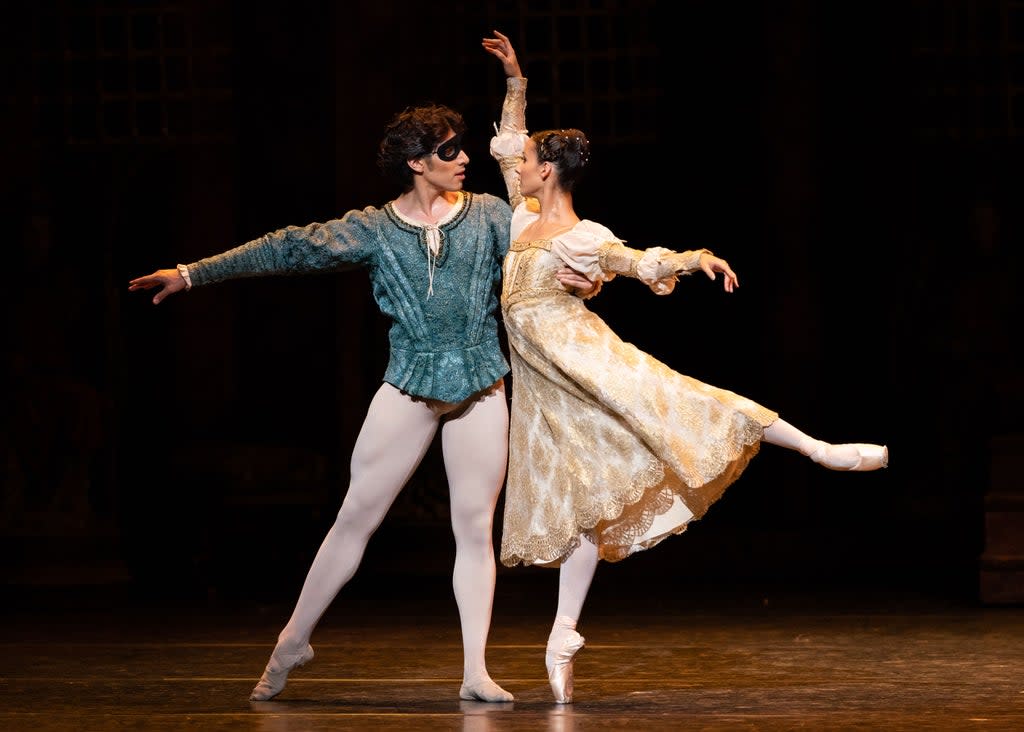Romeo and Juliet review, The Royal Ballet: Francesca Hayward is luminous in this loving revival

After a careful summer, The Royal Ballet reopens its post-lockdown season with the packed stage of Romeo and Juliet. Passionate duets, wrangling families and Renaissance brawls come spilling across the stage. Led by Francesca Hayward’s luminous Juliet, this is a first night of high energy and drama.
It comes after a year of disruption, caused not just by the pandemic, but the death of Royal Ballet-trained choreographer Liam Scarlett following accusations of sexual misconduct. As a consequence, the company has faced serious questions about its organisational culture.
On stage, at least, it looks like a company at strength, with a loving revival of one of its calling cards. Created in 1965, Kenneth MacMillan’s Romeo is big and robust, matching the Prokofiev score. Nicholas Georgiadis’s designs are richly monumental, while the first night put lots of stars on stage.
Hayward is one of The Royal Ballet’s brightest. With glowing line, fluent musicality and fresh, immediate stage presence, she has the gift of drawing an audience into her world. In the early scenes, her Juliet is giddily happy, pouring herself into the big, swooping moves of MacMillan’s choreography.
She is sturdily supported by her Romeo, Cesar Corrales. He’s a dancer of energetic technique, with big jumps and friendly chemistry, though he doesn’t match Hayward’s nuance.
Marcelino Sambé makes a dazzling Mercutio. His virtuosity is outrageously charming, with corkscrew turns and footwork so sharp, he might cut himself. There’s a sense of baffled disbelief in his death scene: that anything could stop him, that anything could hurt this much. Matthew Ball is an elegant Tybalt, with a streak of insecurity that leads quickly to meanness.
MacMillan’s marketplace scenes can lag, but this revival makes the feuding and fight scenes feel newly minted. There is a brilliant, awful messiness to the moment when Romeo’s push sends Mercutio stumbling into the range of Tybalt’s sword.
As the story turns darker, Hayward rushes to meet it. Saying goodbye to Romeo in the bedroom scene, she is already consumed with the idea of losing him. It’s a desolate, highly personal reading, despair overtaking romance. Confronting her family, refusing to marry Paris, she is frozen with disgust, her flowing lines turned rigid.
In the tomb scene, Corrales seems poleaxed by grief, most touching in his moments of stillness. Hayward’s Juliet has a desperate moment of denial, kissing dead Romeo again and again, as if pushing away recognition. The ballet’s broad canvas narrows, becoming a very intimate tragedy.
Until 25 February. roh.org.uk
Read More
Hamlet review, Young Vic: Cush Jumbo is let down by a curiously muddled production
Jasmine Lee-Jones: ‘People tend to commodify young women playwrights’


